Chest compound exercises are foundational movements in strength training and bodybuilding that target the pectoral muscles along with various secondary muscle groups. These exercises are designed to engage multiple joints and muscles simultaneously, making them highly efficient for building strength, muscle mass, and improving overall upper-body functionality.
Unlike isolation exercises, which aim to target a single muscle group, compound exercises allow for heavier weights to be lifted since they recruit more muscles into each movement. This not only maximizes muscle growth and strength gains but also enhances calorie expenditure, making these exercises indispensable for anyone looking to develop a strong, well-defined chest.
Engaging in a variety of chest compound exercises ensures balanced development, reduces the risk of injury, and contributes to better posture and physical performance in both athletic endeavors and daily activities.
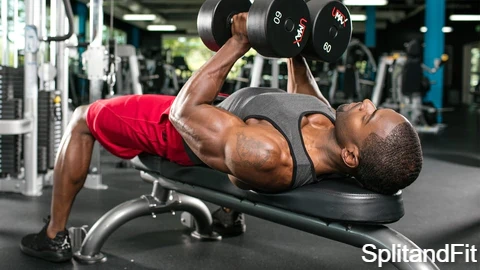
Benefits of Chest Compound Exercise
- Efficient Muscle Mass and Strength Building: Compound exercises allow for the use of heavier weights by engaging multiple muscle groups, leading to greater strength gains and muscle growth.
- Improved Bone Health: Strength training, including chest presses, places mechanical stress on bones, stimulating bone growth and reducing the risk of osteoporosis.
- Cardiovascular Improvement: These exercises elevate the heart rate, providing cardiovascular benefits that improve heart health and endurance.
- Higher Calorie Burn: Engaging multiple muscle groups leads to increased energy expenditure during workouts, aiding in fat loss and weight management.
- Enhanced Intramuscular Coordination and Flexibility: The complex movements involved in compound exercises improve coordination and flexibility, contributing to better performance in sports and daily activities.
- Comprehensive Upper Chest Development: Incline presses, a type of compound exercise, are particularly effective for targeting and building the upper chest fibers.
- Maximizes Workout Efficiency: By training more muscles in one workout, compound chest exercises save time and increase workout efficiency, making them ideal for both beginners and experienced athletes.
Incorporating chest compound exercises into your fitness routine can lead to significant improvements in strength, size, and overall physical health, making them an essential component of effective workout programs.
Best Chest Compound Exercise
Here’s a list of the top 10 best chest compound exercises that are effective for building mass, targeting both the upper and lower chest regions, and can be performed with minimal to no equipment:
- Barbell Bench Press: A staple exercise in strength training, targeting the pectoral muscles, triceps, and shoulders.
- Incline Barbell Bench Press: Focuses more on the upper chest, providing a comprehensive workout that also engages the shoulders and triceps.
- Dumbbell Bench Press: Offers a greater range of motion compared to barbells, effectively working the chest muscles, as well as engaging stabilizing muscles.
- Dumbbell Floor Press: A variation that limits the range of motion, focusing on the triceps and the lockout portion of the press, while still engaging the chest.
- Push-ups: A versatile bodyweight exercise that targets the chest, shoulders, and triceps, with variations to adjust difficulty and focus areas.
- Dips: Primarily targets the lower chest and triceps when performed with a forward lean; can be modified to increase difficulty.
- Incline Dumbbell Press: Targets the upper pectoral muscles, offering the benefits of the incline bench press with the added range of motion from using dumbbells.
- Decline Bench Press (Barbell or Dumbbell): Focuses more on the lower chest muscles, providing a unique angle to stimulate muscle growth.
- Chest Press Machine: Allows for targeted pressure on the chest muscles while providing stability and support, ideal for beginners or for those focusing on muscle isolation.
- Weighted Chest Dips: By adding weight to traditional dips, this exercise increases intensity, further engaging the chest, triceps, and shoulders.
These exercises incorporate various equipment and bodyweight movements, ensuring a comprehensive approach to chest development. Incorporating these into your workout routine can lead to significant improvements in strength, muscle mass, and overall chest aesthetics.
1. Barbell Bench Press
The Barbell Bench Press is a fundamental weightlifting exercise aimed at strengthening the upper body, primarily targeting the pectoral (chest) muscles, as well as the shoulders and triceps.
How to Perform:
- Begin by lying flat on a bench with your feet firmly planted on the ground.
- Grip the barbell with both hands, slightly wider than shoulder-width apart.
- Unrack the barbell by straightening your arms and move it directly above your chest.
- Slowly lower the barbell towards your chest by bending your elbows, keeping them at a 45-degree angle to your body.
- Once the barbell lightly touches your chest, push it back up to the starting position by extending your arms fully.
Tips:
- Ensure your back is slightly arched, and your shoulder blades are retracted throughout the exercise for stability and safety.
- Maintain a controlled motion; avoid letting the bar drop quickly to your chest.
- Drive through your feet and use your whole body as support to lift heavier weights effectively.
- Avoid locking your elbows at the top of the movement to keep tension on the muscles.
- Breathe in on the way down and exhale forcefully on the way up for proper breathing technique.
2. Incline Barbell Bench Press
The Incline Barbell Bench Press is an upper body strength exercise that targets the upper pectoral muscles, with secondary engagement of the shoulders and triceps. It’s performed on an incline bench to focus on the upper chest area.
How to Perform:
- Adjust the bench to an incline of about 30-45 degrees.
- Lie back on the bench with your feet flat on the ground for stability.
- Grip the barbell with both hands slightly wider than shoulder-width apart.
- Unrack the barbell, holding it straight over your shoulders with arms extended.
- Slowly lower the barbell to your upper chest, keeping your elbows at a 45-degree angle from your body.
- Push the barbell back up to the starting position by extending your arms fully.
Tips:
- Keep your wrists straight and aligned with your forearms throughout the exercise.
- Focus on squeezing your chest muscles as you press the barbell upwards.
- Do not bounce the bar off your chest; maintain control during the descent and ascent.
- Ensure your back is slightly arched and your shoulder blades are retracted to protect your shoulders.
- Breathe in as you lower the barbell and exhale forcefully as you press it up.
3. Dumbbell Bench Press
The Dumbbell Bench Press is a chest exercise that allows for a more natural range of motion compared to the barbell bench press. It targets the pectoral muscles, with secondary engagement of the shoulders and triceps.
How to Perform:
- Sit on a bench with a dumbbell in each hand resting on your thighs.
- Using your thighs, kick each dumbbell up one at a time as you lie back into position.
- Start with the dumbbells at chest level, elbows bent and palms facing forward.
- Press the dumbbells up by extending your arms until they are straight above your chest.
- Lower the dumbbells slowly back to the starting position.
Tips:
- Keep your feet flat on the floor and maintain a slight arch in your lower back for stability.
- Ensure your wrist remains straight and aligned with your forearms throughout the exercise.
- Squeeze your chest at the top of the movement for maximum engagement.
- Control the weight during both the ascent and descent; avoid letting the dumbbells drop.
- Focus on maintaining equal pressure in both hands to ensure balanced development.
4. Dumbbell Floor Press
The Dumbbell Floor Press is a strength-building exercise focusing on the upper body, particularly the triceps, chest, and shoulders. It’s performed lying on the floor and offers a reduced range of motion compared to the bench press, placing less strain on the shoulder joints.
How to Perform:
- Lie on the floor with your knees bent and feet flat on the ground.
- Hold a dumbbell in each hand at chest level, palms facing forward.
- Press the dumbbells straight up by extending your arms fully.
- Pause briefly at the top, then slowly lower the dumbbells back to the starting position until your upper arms lightly touch the floor.
Tips:
- Keep your lower back pressed against the floor throughout the exercise to maintain spinal alignment.
- Focus on moving the weight with your chest and triceps, keeping your elbows at a 45-degree angle from your body.
- Exhale as you press the dumbbells up and inhale as you return to the starting position.
- To increase stability, engage your core throughout the movement.
- Avoid letting the dumbbells drift too far towards your head or stomach; aim to keep them aligned with your chest.
5. Push-ups
Push-ups are a classic bodyweight exercise that targets the chest, shoulders, triceps, and core, offering a comprehensive upper body workout.
How to Perform:
- Start in a plank position with your hands slightly wider than shoulder-width apart and your body in a straight line from head to heels.
- Engage your core and keep your back flat throughout the movement.
- Lower your body towards the ground by bending your elbows, keeping them at a 45-degree angle to your torso.
- Descend until your chest is just above the floor.
- Push through your hands to extend your arms and return to the starting position.
Tips:
- Keep your elbows slightly bent at the top of the movement to maintain tension on the muscles.
- Ensure your body remains in a straight line throughout the exercise to engage your core effectively.
- Breathe in as you lower yourself and exhale as you push up.
- To modify, drop to your knees rather than your toes, maintaining the correct form.
- Increase difficulty by trying variations such as wide, diamond, or single-arm push-ups.
6. Dips
Dips are a compound bodyweight exercise targeting the triceps, chest, and shoulders. They are performed using parallel bars or a dip station.
How to Perform:
- Grasp the bars and jump up to a starting position with your arms fully extended and your body hanging straight down.
- Keep your elbows close to your body and lean forward slightly to emphasize chest involvement.
- Lower your body by bending your elbows until your shoulders are slightly below your elbows.
- Push yourself back up to the starting position by extending your arms.
Tips:
- Keep your core engaged throughout the movement to maintain stability.
- Avoid locking your elbows at the top to keep continuous tension on the muscles.
- Do not descend too low; stopping when shoulders are just below elbows helps prevent shoulder strain.
- Control your descent and ascent to maximize muscle engagement and minimize momentum.
- For beginners, consider using assisted dip machines or resistance bands until you build sufficient strength.
7. Incline Dumbbell Press
The Incline Dumbbell Press is a weightlifting exercise that targets the upper chest, shoulders, and triceps. It is performed on an inclined bench to emphasize the upper pectoral muscles.
How to Perform:
- Adjust the bench to an incline of 30-45 degrees.
- Sit at the end of the bench with a dumbbell in each hand, palms facing forward.
- Lie back and bring the dumbbells to the sides of your chest, elbows bent.
- Press the dumbbells upward until your arms are fully extended above your chest.
- Slowly lower the dumbbells back to the starting position.
Tips:
- Keep your feet planted on the floor and your back pressed against the bench for stability.
- Maintain a neutral wrist position throughout the exercise.
- Focus on a controlled movement, avoiding any jerking motions.
- Exhale as you press the dumbbells up and inhale as you lower them.
- Ensure your movements are balanced to promote symmetrical muscle development.
8. Decline Bench Press (Barbell or Dumbbell)
The Decline Bench Press targets the lower pectoral muscles, with secondary emphasis on the triceps and shoulders. It’s performed on a decline bench to shift the focus towards the lower chest.
How to Perform:
- Set the bench to a decline position, usually between 15-30 degrees.
- Secure your legs at the end of the bench and lie down with your eyes under the barbell (for barbell press) or a dumbbell in each hand (for dumbbell press).
- For barbell: Grip the bar slightly wider than shoulder-width, unrack it, and start with it directly above your chest.
- For dumbbell: Start with the dumbbells at shoulder level, palms facing forward.
- Lower the barbell or dumbbells to just below your chest, keeping elbows at a 45-degree angle from your body.
- Press the weight back up to the starting position until arms are fully extended.
Tips:
- Keep your feet secured and use your legs to help stabilize your body throughout the exercise.
- Focus on a smooth, controlled movement, avoiding any bouncing off your chest.
- Maintain a slight arch in your lower back but keep your butt on the bench.
- Breathe in as you lower the weight and exhale as you press it up.
- Avoid locking your elbows at the top to maintain tension on the chest muscles.
9. Chest Press Machine
The Chest Press Machine is a strength training apparatus designed to target the pectoral muscles, deltoids, and triceps. It simulates the pushing movements similar to a bench press but offers more stability, making it suitable for all fitness levels.
How to Perform:
- Sit on the machine with your back flat against the pad.
- Adjust the seat and handles so that the handles are at chest level.
- Grip the handles with palms facing down (forward).
- Push the handles away from you by extending your arms.
- Slowly return to the starting position after a brief pause.
Tips:
- Ensure the seat is adjusted so that your feet can firmly touch the ground, providing additional stability.
- Keep your wrists straight throughout the movement to prevent strain.
- Focus on squeezing your chest at the end of the push phase for maximum engagement.
- Avoid locking your elbows when your arms are fully extended.
- Control the motion both while pushing away and returning to the start to maximize effectiveness and reduce the risk of injury.
10. Weighted Chest Dips
Weighted Chest Dips are an advanced variation of standard dips that incorporate additional weight to increase resistance. This exercise targets the chest, shoulders, triceps, and upper back, enhancing muscle strength and size.
How to Perform:
- Secure a weight belt around your waist or hold a dumbbell between your feet for added resistance.
- Grip the parallel bars and hoist yourself up to a starting position with arms fully extended.
- Lean slightly forward to shift the focus onto the chest muscles.
- Slowly lower your body by bending your elbows until they are at a 90-degree angle or lower, ensuring your chest is doing most of the work.
- Push through your palms to lift your body back to the starting position.
Tips:
- Keep your movements controlled and smooth to prevent momentum from taking over.
- Adjust the amount of weight according to your fitness level; start lighter and gradually increase.
- Focus on maintaining a slight forward lean throughout the exercise to better target the chest.
- Ensure your elbows do not flare out too much; keep them relatively close to your body.
- Listen to your body and avoid going lower than is comfortable for your shoulder joints.
Frequent Question Answers
| Question | Answer |
|---|---|
| What is the best compound exercise for the chest? | The Barbell Bench Press is widely regarded as the best compound exercise for the chest. It engages the pectoralis major, as well as the triceps and deltoids, offering a comprehensive upper-body workout. |
| What is the most effective exercise for the chest? | The Bench Press, using either a barbell or dumbbell, is considered the most effective exercise for targeting the entire chest area. It allows for a significant weight to be lifted, engaging both the large and small muscle groups in the chest. |
| What is the number 1 chest exercise? | The Barbell Bench Press is often cited as the number 1 chest exercise due to its effectiveness in building muscle mass and strength across the entire chest area. |
| What are the only 4 chest exercises? | The core 4 chest exercises that can provide a comprehensive chest workout are: 1. Barbell Bench Press 2. Incline Bench Press (Barbell) 3. Dumbbell Bench Press 4. Push-ups. -These exercises target the chest from various angles and utilize different equipment for a well-rounded routine. |
| Is 3 chest exercises enough? | Yes, for most people, performing 3 key chest exercises within a workout can be sufficient to stimulate muscle growth and strength gains, especially if those exercises are chosen to target the chest from different angles and incorporate both compound and isolation movements. |
| Can I do chest everyday? | It is not recommended to train the chest every day. Muscles, including those in the chest, require time to recover and rebuild stronger. Overtraining can lead to injury and hinder progress. A balanced workout routine will include rest days or training different muscle groups on consecutive days. |
| How to increase chest size? | To increase chest size, focus on progressive overload with compound exercises like bench press and incline press, ensuring you gradually increase the weight or reps over time. Additionally, maintain a calorie surplus with adequate protein intake to fuel muscle growth. Consistency in training and proper nutrition are key. |
| How can I bulk up my chest? | Bulking up your chest involves a combination of consistent strength training with exercises like bench presses, flyes, and push-ups, progressively increasing the intensity of your workouts. Ensure you’re consuming enough calories, particularly from proteins and carbohydrates, to support muscle growth. Rest and recovery are also crucial to allow your muscles to grow bigger. |
| How to build a big chest? | Building a big chest requires a focused approach: 1. Perform compound lifts like the bench press and incline bench press regularly, with an emphasis on increasing the weight over time. 2. Include isolation exercises like cable flyes to target the chest from multiple angles. 3. Follow a nutrient-rich diet high in protein to support muscle repair and growth. 4. Ensure adequate rest and recovery between workouts. Consistency and progressively challenging your muscles are essential. |
Conclusion
In conclusion, the Best Chest Compound Exercises encompass a variety of movements that target the chest muscles from multiple angles, engage secondary muscle groups, and promote overall upper-body strength. Whether utilizing barbells, dumbbells, machines, or body weight, these exercises are fundamental for anyone looking to build a strong, well-defined chest.
Incorporating exercises such as the Barbell Bench Press, Incline Dumbbell Press, Push-ups, and Dips into your routine can maximize muscle growth, enhance functional strength, and improve physical appearance. By focusing on compound movements, you ensure a more efficient and comprehensive workout, making the most out of your time spent in the gym.
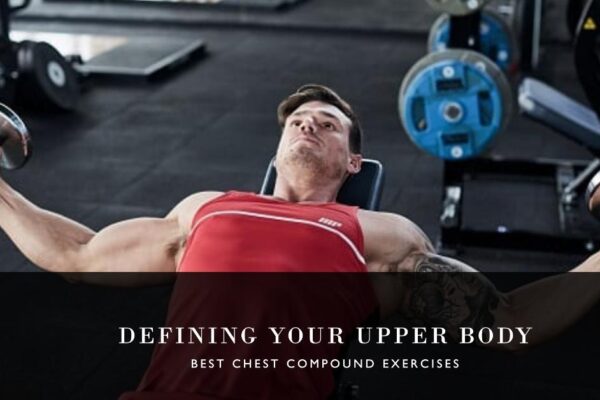


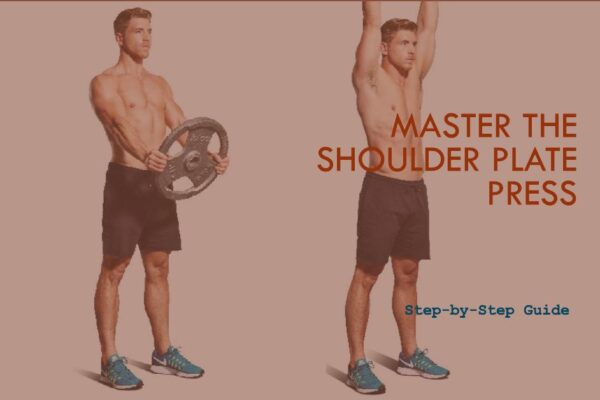
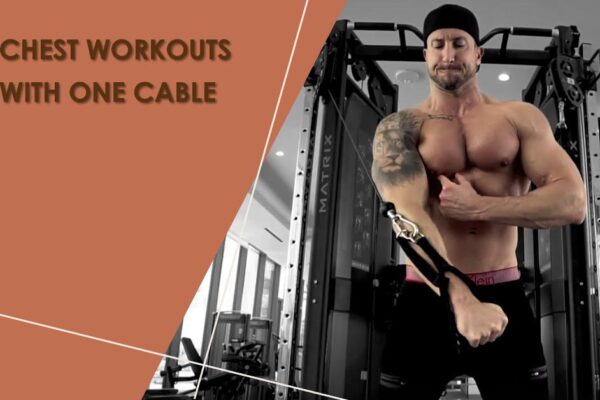
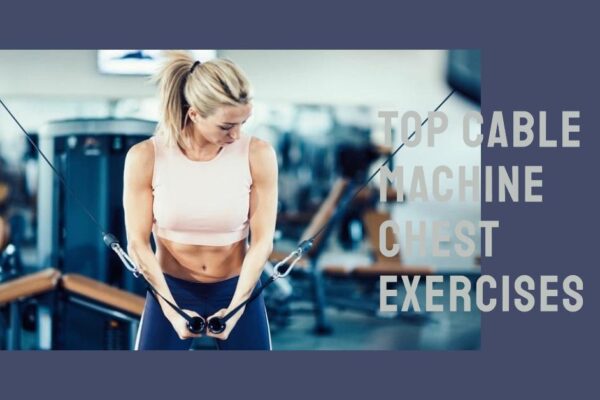
Leave a Reply